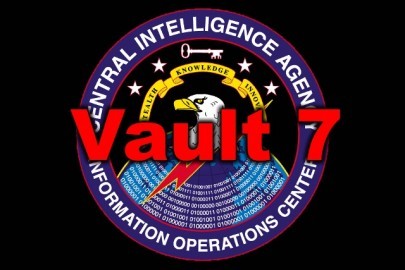WikiLeaks has released a huge set of files that it calls “Year Zero” and which mark the biggest exposure of CIA spying secrets ever.
The massive set of documents – over 8,000 pages in all – include a host of hacking secrets that could embarrass intelligence agencies and the US government, as well as undermining spying efforts across the world.
Here are six of the biggest secrets and pieces of information yet to emerge from the huge dump.
1) The CIA has the ability to break into Android and iPhone handsets, and all kinds of computers
The US intelligence agency has been involved in a concerted effort to write various kinds of malware to spy on just about every piece of electronic equipment that people use. That includes iPhones, Androids and computers running Windows, macOS and Linux.
If that software is as powerful as WikiLeaks claims, it could be used to remotely control those devices and switch them on and off. Once that happened, a vast array of data would be made available – including users’ locations, messages they had sent, and potentially everything heard by the microphone or seen by the camera.
2) Doing so would make apps like Signal, Telegram and WhatsApp entirely insecure
Encrypted messaging apps are only as secure as the device they are used on – if an operating system is compromised, then the messages can be read before they encrypted and sent to the other user. WikiLeaks claims that has happened, potentially meaning that messages have been compromised even if all of the usual precautions had been taken.
3) The CIA could use smart TVs to listen in on conversations that happened around them
One of the most eye-catching programmes detailed in the documents is “Weeping Angel”. That allows intelligence agencies to install special software that allows TVs to be turned into listening devices – so that even when they appear to be switched off, they’re actually on.
That’s just one of the technologies created by the Embedded Devices Branch, the CIA division at the centre of much of the leaks of new information.
4) The agency explored hacking into cars and crashing them, allowing ‘nearly undetectable assassinations’
Many of the documents reference tools that appear to have dangerous and unknown uses. One file, for instance, shows that the CIA were looking into ways of remotely controlling cars and vans by hacking into them.
“The purpose of such control is not specified, but it would permit the CIA to engage in nearly undetectable assassinations,” WikiLeaks notes, in an unproven piece of speculation.
5) The CIA hid vulnerabilities that could be used by hackers from other countries or governments
WikiLeaks claims that its source handed over the documents in order to provoke a debate about the power of intelligence agencies and how their information should be exposed. Perhaps central to that is the accusation that the CIA was “hoarding” exploits that it had found – rather than handing them over to the companies that could fix them, and so make users safe, as they had promised to do.
Such bugs were found in the biggest consumer electronics in the world, including phones and computers made Apple, Google and Microsoft. But those companies didn’t get the chance to fix those exploits because the agency kept them secret in order to keep using them, the documents suggest.
“Serious vulnerabilities not disclosed to the manufacturers places huge swathes of the population and critical infrastructure at risk to foreign intelligence or cyber criminals who independently discover or hear rumors of the vulnerability,” a WikiLeaks statement read. “If the CIA can discover such vulnerabilities so can others.”
WikiLeaks noted that those unfixed exploits affected everyone using the equipment, including “the U.S. Cabinet, Congress, top CEOs, system administrators, security officers and engineers”.
6) More information is coming
The documents have still not been looked through entirely. There are 8,378 pages of files, some of which have already been analysed but many of which hasn’t.
The files are being shared publicly on the WikiLeaks website and the organisation has encouraged its supporters to keep looking through the documents in the hope of finding more stories.
And that’s not to mention the other sets of documents that are coming. The “Year Zero” leaks are just the first in a series of “Vault 7” dumps, Julian Assange said.
When taken together, those “Vault 7” leaks will make up the biggest intelligence publication in history, WikiLeaks claimed.
Ask me anything
Explore related questions





